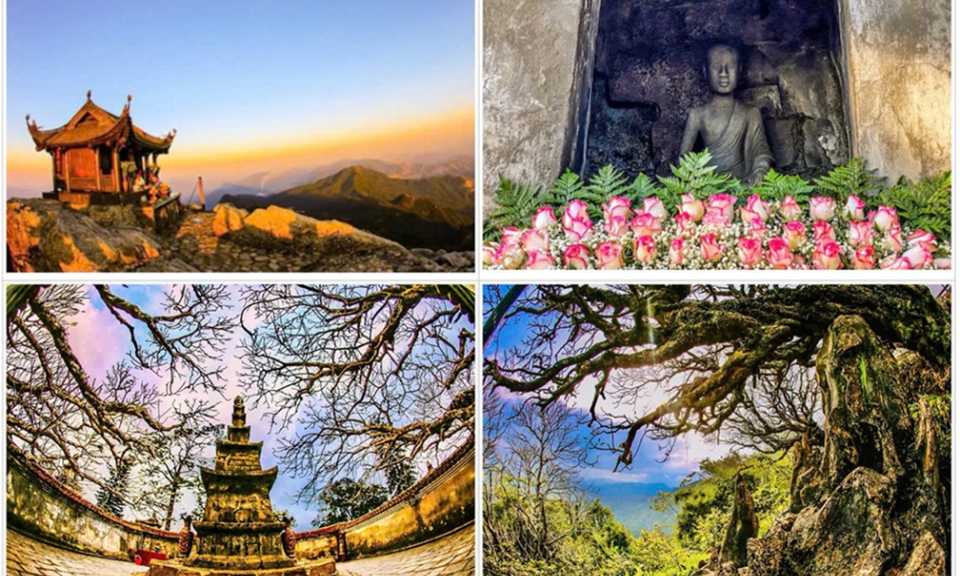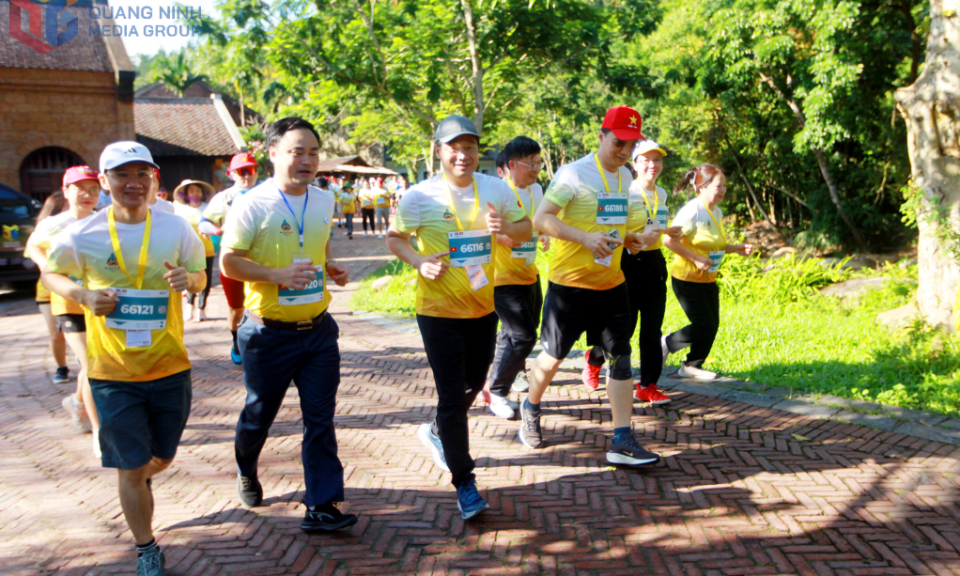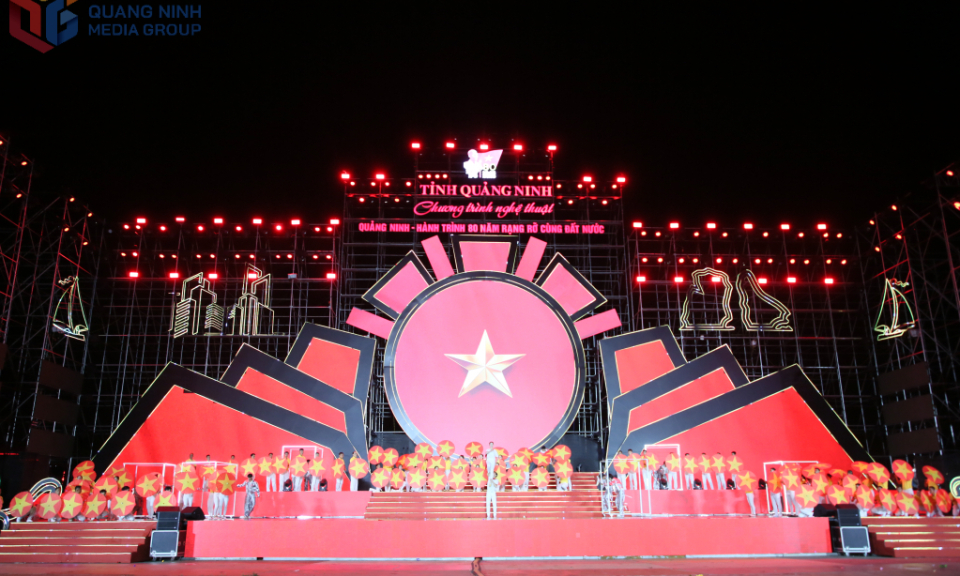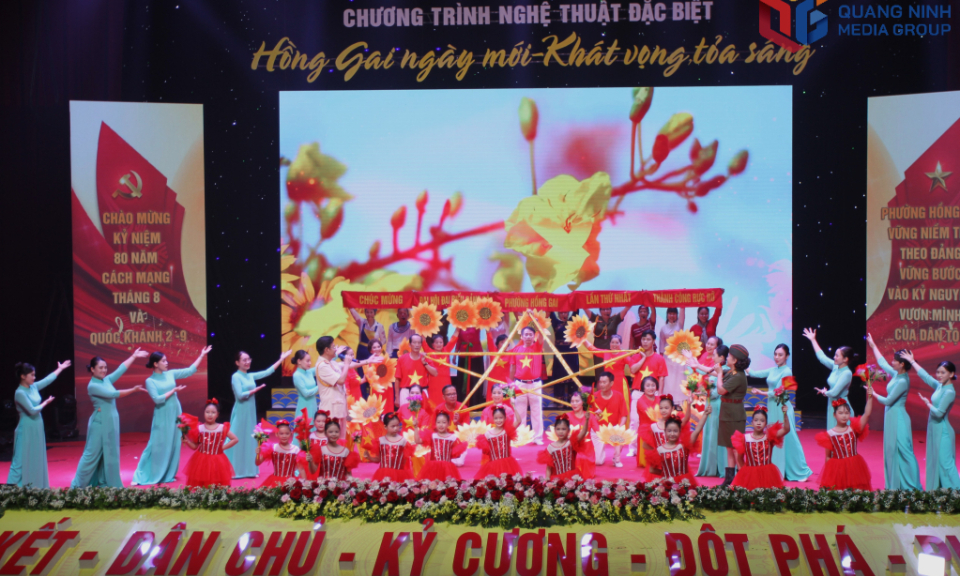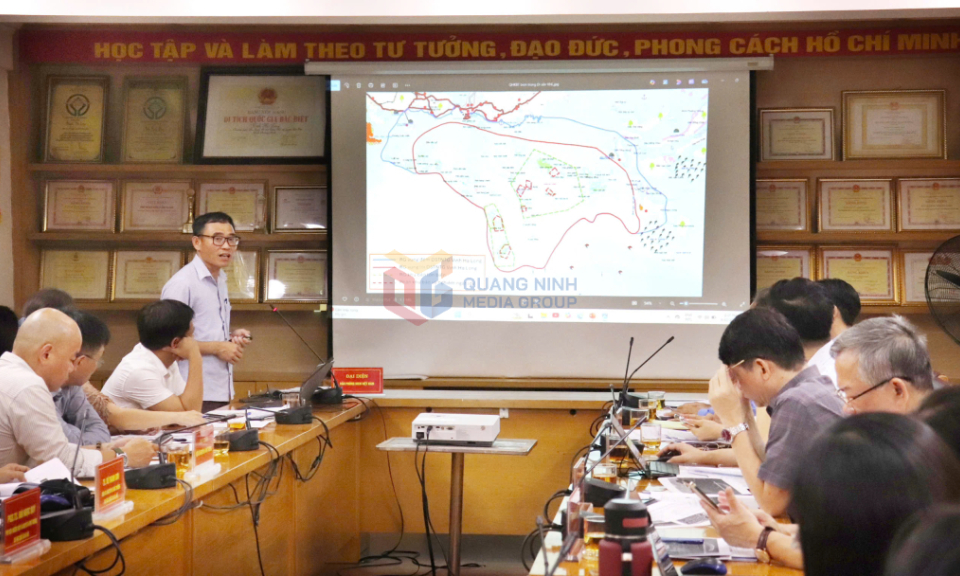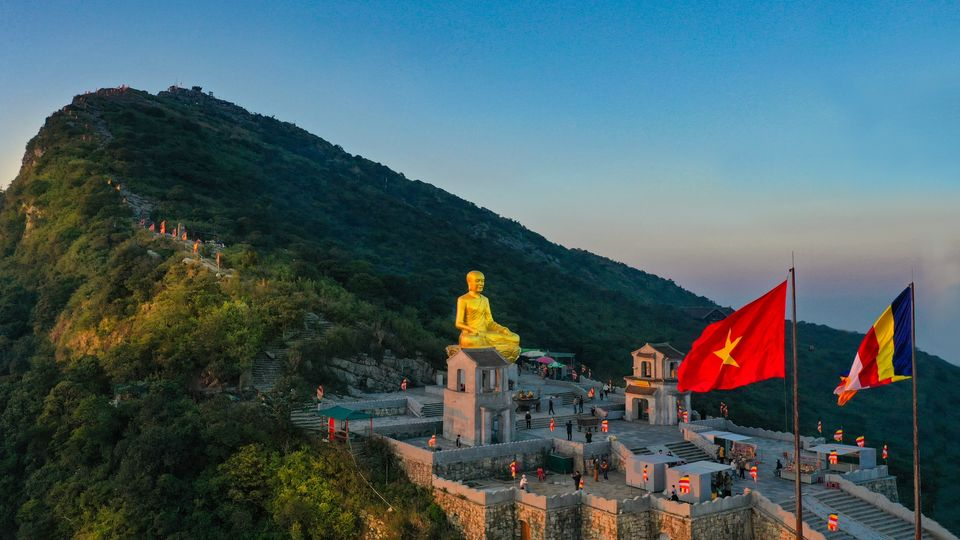
|
Yen Tu Relic and Landscape Complex consists of three groups:
- Yen Tu Historical Relic and Landscape Area (Uong Bi City, Quang Ninh Province) - The Area of Historical Relics of the Tran Dynasty in Dong Trieu (Dong Trieu District, Quang Ninh Province) - The Western Yen Tu Relic and Landscape Area (Yen Dung, Luc Nam, Luc Ngan and Son Dong Districts, Bac Giang Province) |
Every year, from the 10th of January according to the lunar calendar and through three spring months, thousands of visitors from everywhere flock to Yen Tu Mountain to attend the Yen Tu Festival to commemorate Buddhist King Tran Nhan Tong, worship Buddha and contemplate the scenery in spring.
According to Venerable Thich Thanh Quyet, who is Head of the Management Board of the Buddhist Shangha in Quang Ninh Province and verger of Dong (Bronze) Pagoda on Yen Tu Mountain, in the initial days of leading a religious life, apart from practicing and studying the Buddhist tenets to disseminate Buddhist dharma, Buddhist King Tran Nhan Tong also ordered the construction of a system of religious architectural works comprising pagodas, temples and towers of special architectural and artistic value, such as Dong, Bi Thuong, Suoi Tam, Cam Thuc, Lan, Giai Oan, Hoa Yen, Mot Mai, Bao Sai and Van Tieu Pagodas, and Hue Quang and Hon Ngoc Tower Gardens.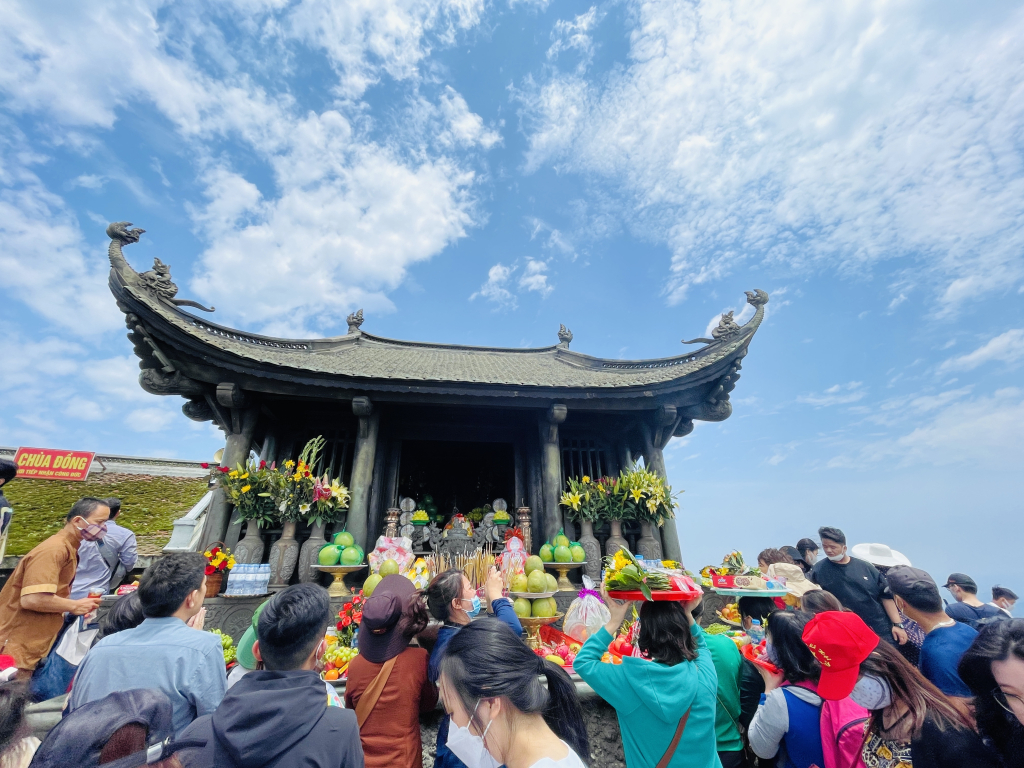
Over time and through the historical vicissitudes, Yen Tu still retains a gigantic treasure of Buddhist culture of the Vietnamese people from 700 years ago with dozens of pagodas, hundreds of temples and thousands of ancient precious relics which contain invaluable spiritual and ideological values of the Truc Lam Zen sect and the splendid culture of the Dai Viet (13th – 15th century).
The first destination of our pilgrimage was Giai Oan (Exoneration) Stream where legend has it that many imperial concubines and beauties committed suicide because they could not advise King Tran Nhan Tong to abandon his religious life to return to the palace. Feeling pity for them the king had a pagoda built to absolve them, thus the stream has the name Giai Oan.
We continued climbing up 500m higher, and then walking along a path shaded by green pine trees and reached Hue Quang Tower Garden. It is the place where a tower with the statue of Buddhist King Tran Nhan Tong inside is situated. The statue is 62cm high and made of marble, featuring a monk in a meditative pose.
Near Hue Quang Tower Garden is Hoa Yen Pagoda which was built during the Ly Dynasty (the 11th century). Above Hoa Yen Pagoda there are Bac and Vang Waterfalls with cool and pure water all year round. We went up on the stone steps and visited the pagodas with many traces which have been recorded in historical books. Finally, we reached the top of Yen Tu Mountain at a height of 1,068m above sea level where Dong Pagoda is. This is a unique and incomparable pagoda which has been recognised as “a bronze pagoda on the top of the biggest mountain in Asia” by the Asian Record Organisation.
Dong Pagoda was built in the Post-Le Dynasty (the 15th century). It was cast with pure copper and is 3m high, 12m2 wide and weighs 60 tonnes. It takes visitors 5-6 hours to go to Dong Pagoda by the fairly steep and rugged trail.
On the way, we came across monk Danh DaRa, verger of Sareyvonsa Pagoda in Dong Xoai Town, Binh Phuoc Province, who had just visited Dong Pagoda. He said: “Only reaching the top of the high mountain and seeing with my own eyes the place where the Buddhist King led a religious life in the old days can I perceive how noble and great his virtue, will and mind were.”
Evening shadow fell over Yen Tu Mountain. The sunset looked like a halo shining over the imposing statue of Buddhist King Tran Nhan Tong meditating in the grandiose space of the mountains. The scene with the breeze blowing through the forests, the sound of a wooden bell and the smell of incense made the visitors feel lost in the Buddhist world without selfishness, worry or sorrow. It is a common feeling for visitors to the mountainous area of Truc Lam - Yen Tu.

